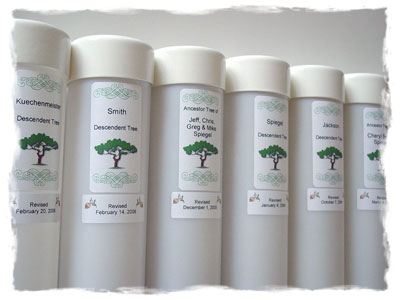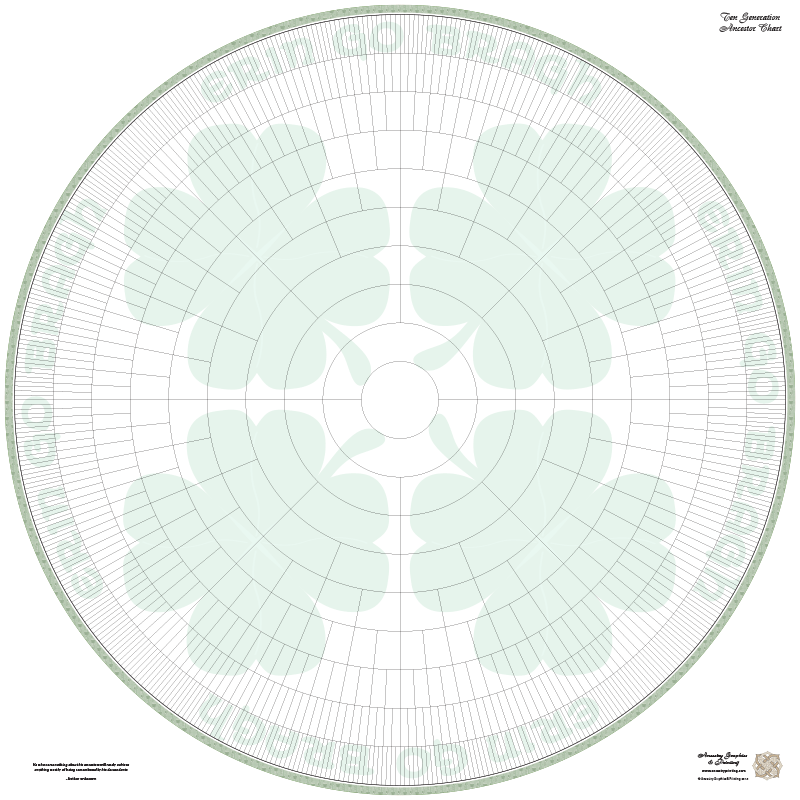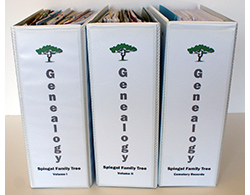What are the 7 easy steps you can take to insure that your genealogy research survives?
 In a perfect world of the distant future, man may someday invent and perfect a method for very long-term data archival. Unfortunately that is only a dream for now, but there are practical methods which you can begin to employ immediately to preserve your genealogy data. The key is to begin using these steps now and make them a regular part of your family history research. The majority of these steps are designed to deal with the loss of your digital data at some point in the future and also to preserve your paper documentation. Chances are that you’ve already spent hundreds or even thousands of hours doing genealogy research. Don’t put off taking these easy steps any longer. Your cost in time and dollars is small compared to your existing investment. You already know how valuable and meaningful your research is – more so than anyone else who is now alive. If you really want it to survive because of the treasure it is, you have to make it very easily identifiable as a treasure and both easy to store and view. Just like your genealogy can’t remain solely as a digital asset and survive long term, it also can’t be boxes of files or papers that someone in the future may not appreciate or understand their significance either. As a result, your strategy must be to make your genealogy research something that is easily identifiable, easy to understand and enjoy, and significant enough that future generations will treat it as a treasure. So let’s review 7 easy steps you can begin using today.
In a perfect world of the distant future, man may someday invent and perfect a method for very long-term data archival. Unfortunately that is only a dream for now, but there are practical methods which you can begin to employ immediately to preserve your genealogy data. The key is to begin using these steps now and make them a regular part of your family history research. The majority of these steps are designed to deal with the loss of your digital data at some point in the future and also to preserve your paper documentation. Chances are that you’ve already spent hundreds or even thousands of hours doing genealogy research. Don’t put off taking these easy steps any longer. Your cost in time and dollars is small compared to your existing investment. You already know how valuable and meaningful your research is – more so than anyone else who is now alive. If you really want it to survive because of the treasure it is, you have to make it very easily identifiable as a treasure and both easy to store and view. Just like your genealogy can’t remain solely as a digital asset and survive long term, it also can’t be boxes of files or papers that someone in the future may not appreciate or understand their significance either. As a result, your strategy must be to make your genealogy research something that is easily identifiable, easy to understand and enjoy, and significant enough that future generations will treat it as a treasure. So let’s review 7 easy steps you can begin using today.
 Print an easy to read and understand ancestor chart – Your research on direct ancestors is really the most interesting and important part of your work that most of your descendants will really want to see so print an ancestor chart first. Then every few years print an updated version if warranted based on new information and corrections you’ve made. Don’t keep putting it off until you think you’re done with your research or you run the very real risk that it will never get done. A printed ancestor chart displays the cornerstone of the most important part of your research that you want your descendants to see in an easy to understand format. Seeing your research all together on one chart is also an invaluable asset that will allow you to easily see what you really have and to correct any mistakes you’ve made. Most importantly, charts that we print for you will come in labeled tubes which are easily identifiable and much less likely to be thrown out by mistake by some future family member. If your budget allows, you can also consider printing various descendant charts over time which would include aunts &uncles, brothers & sisters, nieces & nephews, and in-laws.
Print an easy to read and understand ancestor chart – Your research on direct ancestors is really the most interesting and important part of your work that most of your descendants will really want to see so print an ancestor chart first. Then every few years print an updated version if warranted based on new information and corrections you’ve made. Don’t keep putting it off until you think you’re done with your research or you run the very real risk that it will never get done. A printed ancestor chart displays the cornerstone of the most important part of your research that you want your descendants to see in an easy to understand format. Seeing your research all together on one chart is also an invaluable asset that will allow you to easily see what you really have and to correct any mistakes you’ve made. Most importantly, charts that we print for you will come in labeled tubes which are easily identifiable and much less likely to be thrown out by mistake by some future family member. If your budget allows, you can also consider printing various descendant charts over time which would include aunts &uncles, brothers & sisters, nieces & nephews, and in-laws.
- Print various genealogy reports – Most genealogy software programs come with a number of different reports that you can easily print right at home on letter size paper. Although definitely not as easy to understand and follow as a printed chart, these reports will provide additional information such as citations and biographical notes you’ve made which doesn’t appear on traditional genealogy charts. A printed chart wins hands-down in ease of understanding, but a printed report wins hands-down if you have a lot of biographical information included as well. That’s why having both will give you the best of both worlds. We all already know that not everyone in our family shares the same intense passion for genealogy research that we do, but every few generations there is always the likelihood that a new family member will pick up where we left off. They are the ones who would appreciate more than just the basic chart of your ancestors, and they are the ones who will invest the hours reading and reviewing your more detailed information. Just think of the great “find” you can leave for that particular descendant. Since we don’t know how many generations in the future that will occur, it is incumbent upon us to make sure that what we leave behind also includes the additional biographical sketches, research notes, and source citations which won’t appear on your printed genealogy charts.
 Keep a handwritten genealogy chart as a back-up – For decades prior to the advent of personal computers and genealogy software programs, family historians would purchase blank charts and fill their ancestral data in themselves. Before that people used the family Bible. By utilizing these same methods from the past, you will insure that any new discoveries you make that were not on your most recent printed chart will be clearly visible on your handwritten chart. You can purchase these blank genealogy charts through our web site. They are available in different sizes to handle anywhere between 5 and 10 generations of ancestors and come with either a plain background or a decorative background like the one shown to the right.
Keep a handwritten genealogy chart as a back-up – For decades prior to the advent of personal computers and genealogy software programs, family historians would purchase blank charts and fill their ancestral data in themselves. Before that people used the family Bible. By utilizing these same methods from the past, you will insure that any new discoveries you make that were not on your most recent printed chart will be clearly visible on your handwritten chart. You can purchase these blank genealogy charts through our web site. They are available in different sizes to handle anywhere between 5 and 10 generations of ancestors and come with either a plain background or a decorative background like the one shown to the right.
- Back up your genealogy data on a regular basis using two different methods – Regardless of what portable storage medium you use, label it and then keep it in the front inner pocket of your genealogy binder. Since proprietary genealogy software file formats shouldn’t be counted on to be usable 25 or more years later, also export your genealogy software data to a generic GEDCOM file as well. A GEDCOM file is a generic type of genealogy database file that can be imported into any proprietary genealogy software program. If your GEDCOM file survives and is still a usable format, your descendants may be able to migrate the data into a current genealogy software program of the future.
 Make an easy to identify binder or box of your source material – Develop a method of storing your source documents so that they are well organized, attractive, and most importantly that your packaging sends a clear message – I’m important – don’t throw me away. Many well-meaning people throw away important family history documents after interpreting them as just old papers or memorabilia by mistake. A simple, easy to identify binder which includes your reports along with your most important documents like military records, biographical sketches, obituaries, and birth, marriage, and death certificates is more likely to remain in someone’s home over many generations rather than a an unorganized box of papers that is 50 to 100 years old. Office supply stores sell expanding pocket pages with dividers which will allow you to put a sizable amount of documents or papers into each pocket. If you have a lot of material, you can use several 4-inch binders. Nobody knows the importance of the various documents you possess more than you do, so don’t expect someone in the future to sort out the important ones and pitch the rest. Do that job now so it gets done right and your treasure survives. As you plan out the organization of your genealogy binder or storage method, consider adding one photo of each of your ancestors to a single pocket and make sure each photo is labeled.
Make an easy to identify binder or box of your source material – Develop a method of storing your source documents so that they are well organized, attractive, and most importantly that your packaging sends a clear message – I’m important – don’t throw me away. Many well-meaning people throw away important family history documents after interpreting them as just old papers or memorabilia by mistake. A simple, easy to identify binder which includes your reports along with your most important documents like military records, biographical sketches, obituaries, and birth, marriage, and death certificates is more likely to remain in someone’s home over many generations rather than a an unorganized box of papers that is 50 to 100 years old. Office supply stores sell expanding pocket pages with dividers which will allow you to put a sizable amount of documents or papers into each pocket. If you have a lot of material, you can use several 4-inch binders. Nobody knows the importance of the various documents you possess more than you do, so don’t expect someone in the future to sort out the important ones and pitch the rest. Do that job now so it gets done right and your treasure survives. As you plan out the organization of your genealogy binder or storage method, consider adding one photo of each of your ancestors to a single pocket and make sure each photo is labeled.
- Write a letter to your descendants – The most touching thing you can do is to write an open letter to your descendants and put it as the first few pages in your genealogy binder. In your letter there are two very important things to discuss. Let them know about yourself and why you developed an interest in your family history. Tell them about how you went about your research using both digital and traditional methods. Talk about your trips to courthouses, cemeteries, and distant relatives in your search for information. Imagine having the opportunity to read a personal letter from one of your distant ancestors and how that would make you feel. Next tell them everything about what you have on your CD or DVD and whether it contains any information which is not in your binder. For example, are there additional scans of other documents like census data or wills or military records. Be specific about what genealogy software you used and specifically what version. Are there any additional photographs of family members whether individually or at a family reunion. And finally give as much information as you can about what formats the various data is saved in on your CD or DVD. For example, JPG, GIF, BMP, PNG, PDF, DOC, and also any proprietary genealogy software format. This will give your descendants the knowledge of what they can expect to find and in the event your data is inaccessible, whether it will be worth it to hire a digital archaeologist to recover and convert the data into formats which are then currently in use. You should also encourage your descendants to “refresh” the data on the storage medium that you’ve left behind for them. Refreshing means copying your files from their old storage medium onto a newer storage medium to refresh and extend the lifetime of the data. Businesses and libraries with digital archives are now doing the same thing to preserve their data, and so must your descendants if your original data is to survive.
- Redundancy matters – In any future generation, the number of your descendants may be expanding or contracting depending upon marriage and birth rates. As a result, it’s always a safe bet to make sure that there are multiple copies of your research to pass down whenever possible. Although it would be nice to think that every copy will survive the test of time, reality says that some copies won’t. Natural disasters like fires and tornadoes can wipe out the only copy of your genealogy research and so can a childless marriage of one of your descendants who ended up possessing the only single copy of your work. So anticipate this and cover the possibility of loss by creating multiple copies of your life’s work. They make great Christmas gifts to children, grandchildren, siblings, nieces, and nephews.




